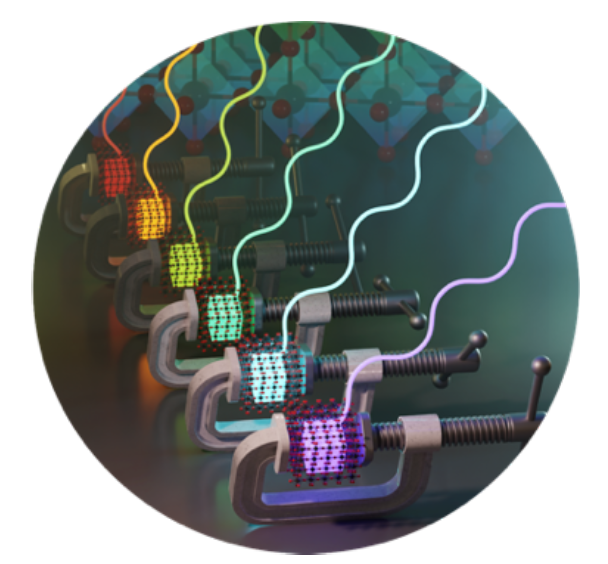Multifunctional Hybrid Materials for Energy Conversion in Photovoltaics
Hybrid organic-inorganic materials are increasingly relevant for emerging energy technologies.1 In particular, metal halide perovskites have become one of the leading semiconductors for solar-toelectric energy conversion in photovoltaics.2–3 However, their operational instability hinders practical applications.3 While this can, to an extent, be overcome by incorporating organic moieties within hybrid perovskite frameworks that form low-dimensional architectures with superior operational stabilities, their electronically insulating character often compromises the resulting photovoltaic performances.3–5 This issue will be addressed by discussing the capacity of supramolecular engineering in the design of adaptive bio-inspired materials3 and the use of (photo)electroactive organic species to enhance the functionality of hybrid perovskites by enabling control in response to external stimuli,4 such as voltage bias,5 light,6 and pressure,7 opening a path toward multifunctional materials and smart photovoltaics.

Schematic of multifunctional perovskite materials responsive to external stimuli, such as pressure.7
[1] S. Krause* and J. V. Milić*, Commun. Chem. 2023, accepted.
[2] J. V. Milić*, Chimia 2022, 76, 784–791.
[3] W. Luo, G. AlSabeh, J. V. Milić*, Photochemistry 2022, 50, 342–366.
[4] J. V. Milić*, J. Mater. Chem. C 2021, 9, 11428–11443.
[5] Mishra, P. Ahlawat, G. Fish, F. Jahanbakshi, M. Mladenović, M. A. Preciado-Ruiz, M. Almalki, M. C. Gelvéz-Rueda, V. Dufoulon, T. Schneeberger, D. J. Kubicki, R. Poranne, F. C. Grozema, S. M. Zakeeruddin, J. E.Moser, U. Rothlisberger, L. Emsley*, J. V. Milić*, M. Graetzel*. Chem. Mater. 2021, 33, 6412–6420.
[6] W. Luo, G. AlSabeh, J. V. Milić*, et al. 2023, unpublished work.
[7] L. A. Muscarella, A. Dučinskas, M. Dankl, M. Andrzejewski, N. P. M. Casati, U. Rothlisberger, J. Maier, M.Graetzel, B. Ehrler*, J. V. Milić*, Adv. Mat. 2022, 202108720.
Acknowledgments: The work presented is the result of a collaborative effort across research groups and institutions, in particular at the Adolphe Merkle Institute of the University of Fribourg, EPFL, and PSI in Switzerland, Max Planck Institute for Solid-State Research in Germany, and AMOLF in The Netherlands, as detailed in the references. The speaker is grateful to collaborators, co-workers, and funding support from the Swiss National Science Foundation, Adolphe Merkle Institute, and NCCR Bio-Inspired Materials.